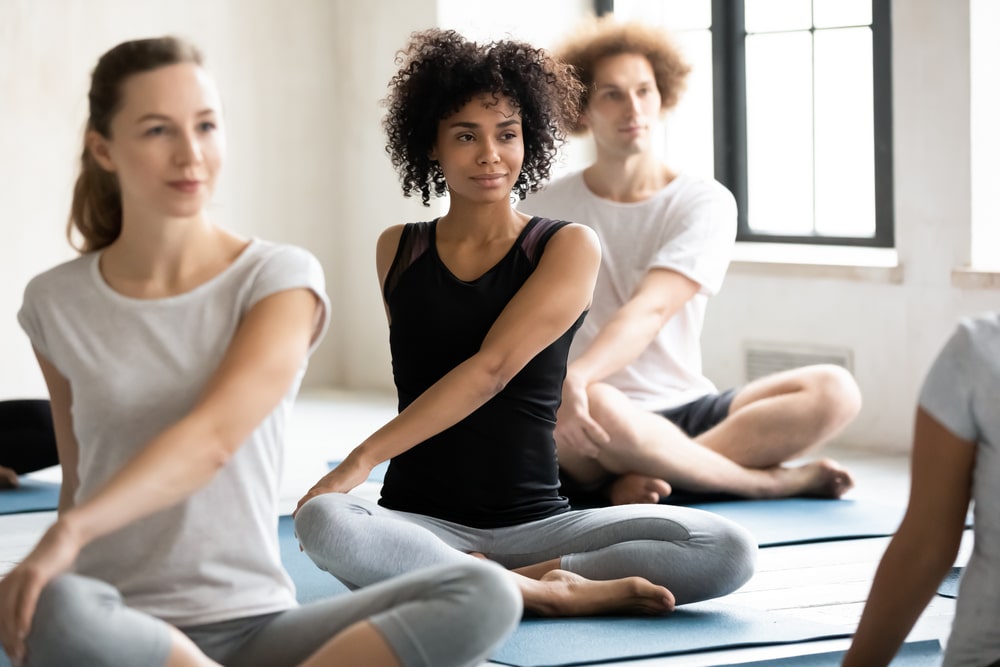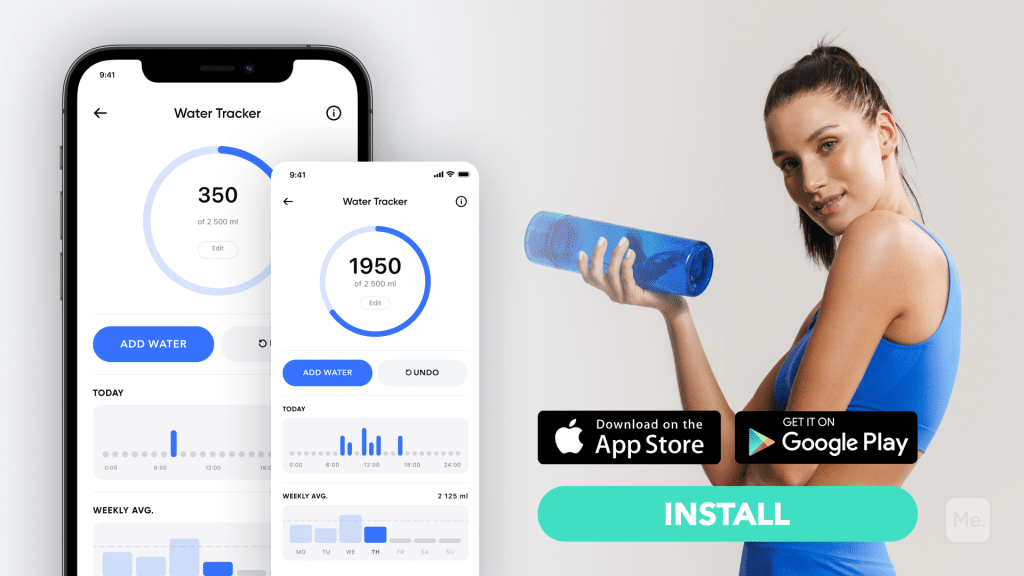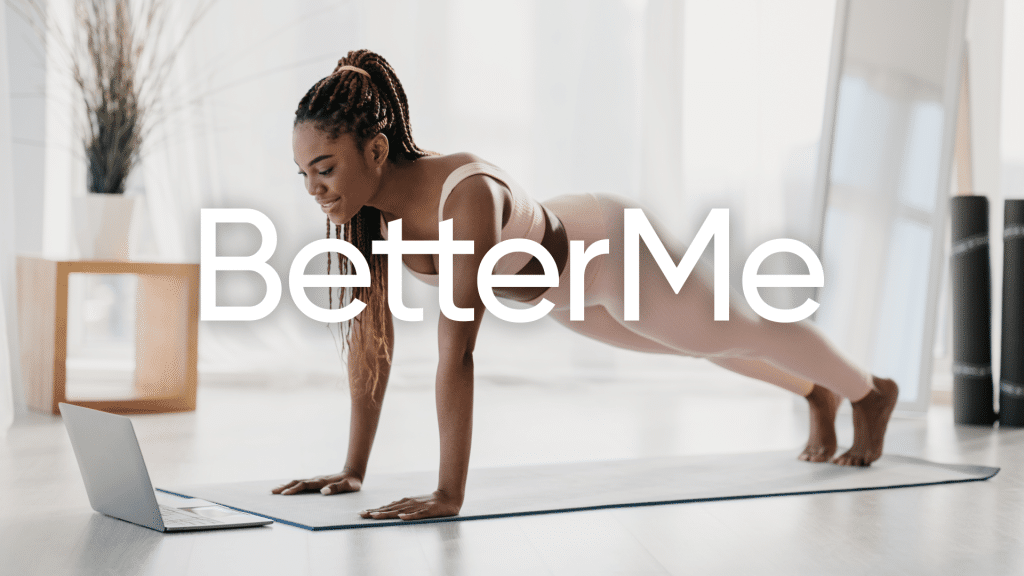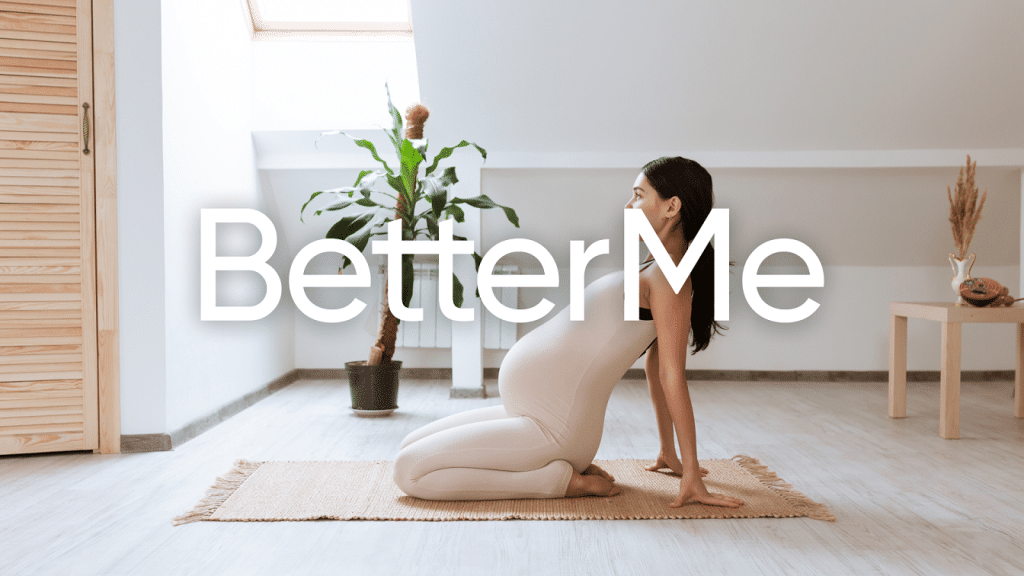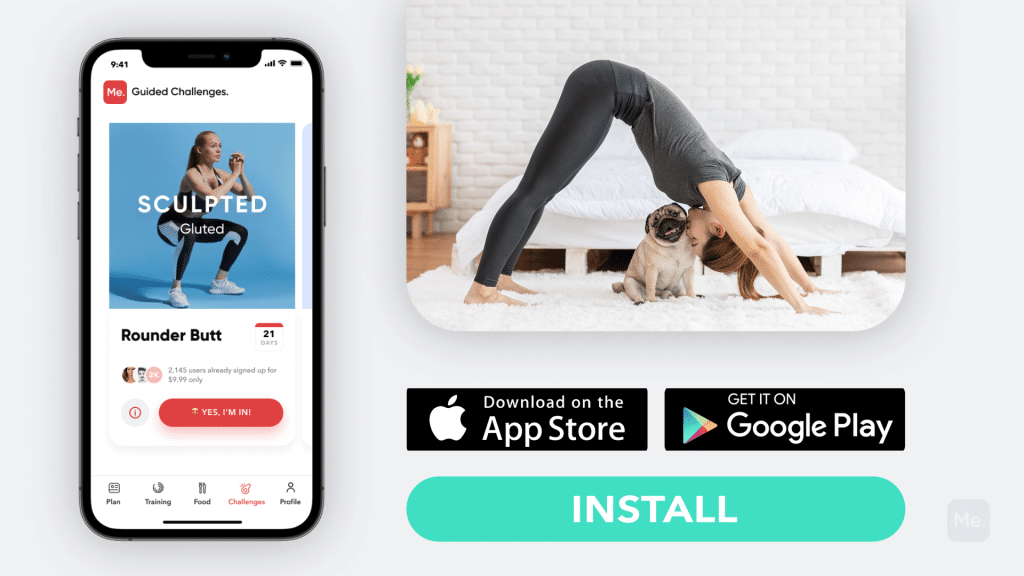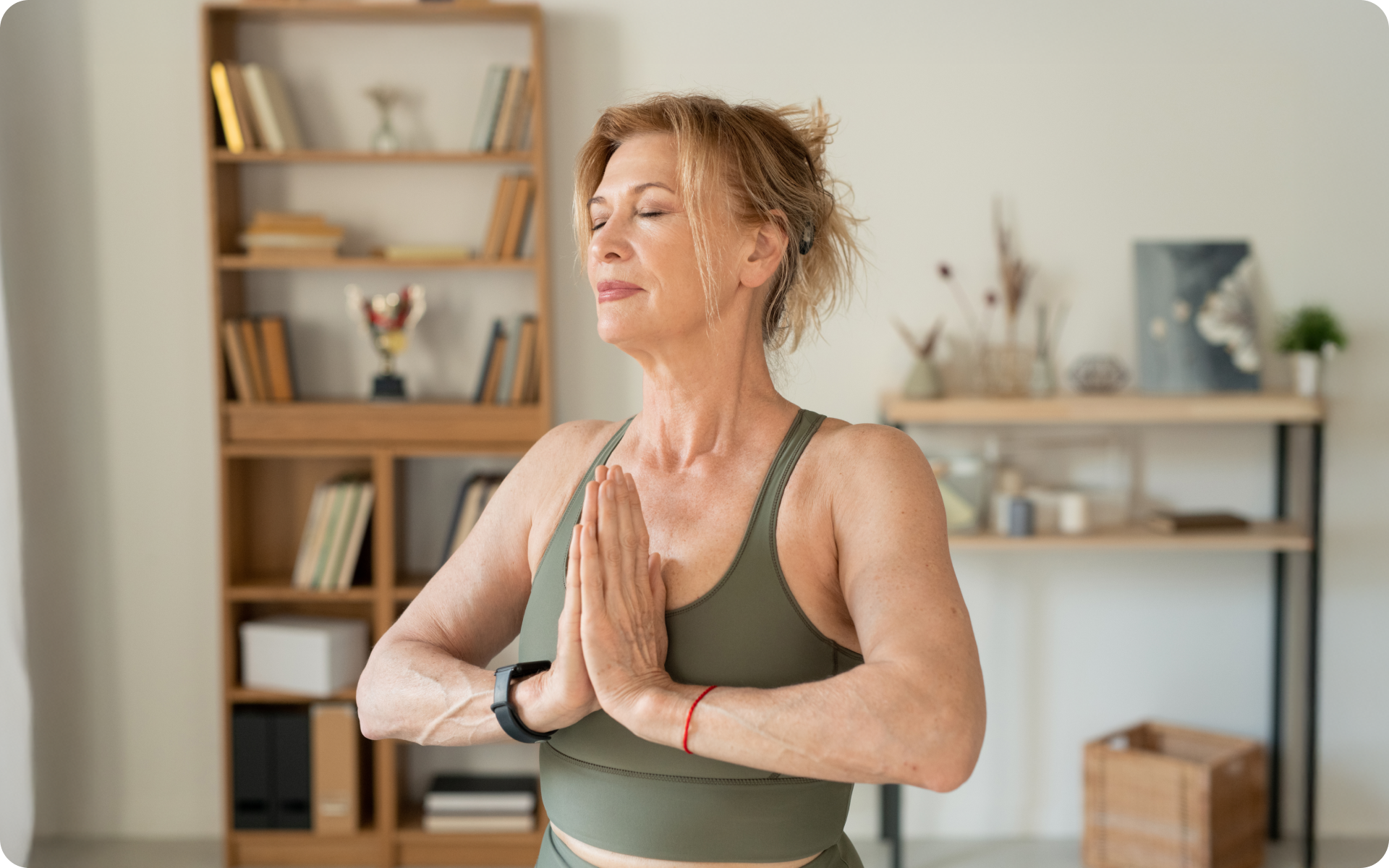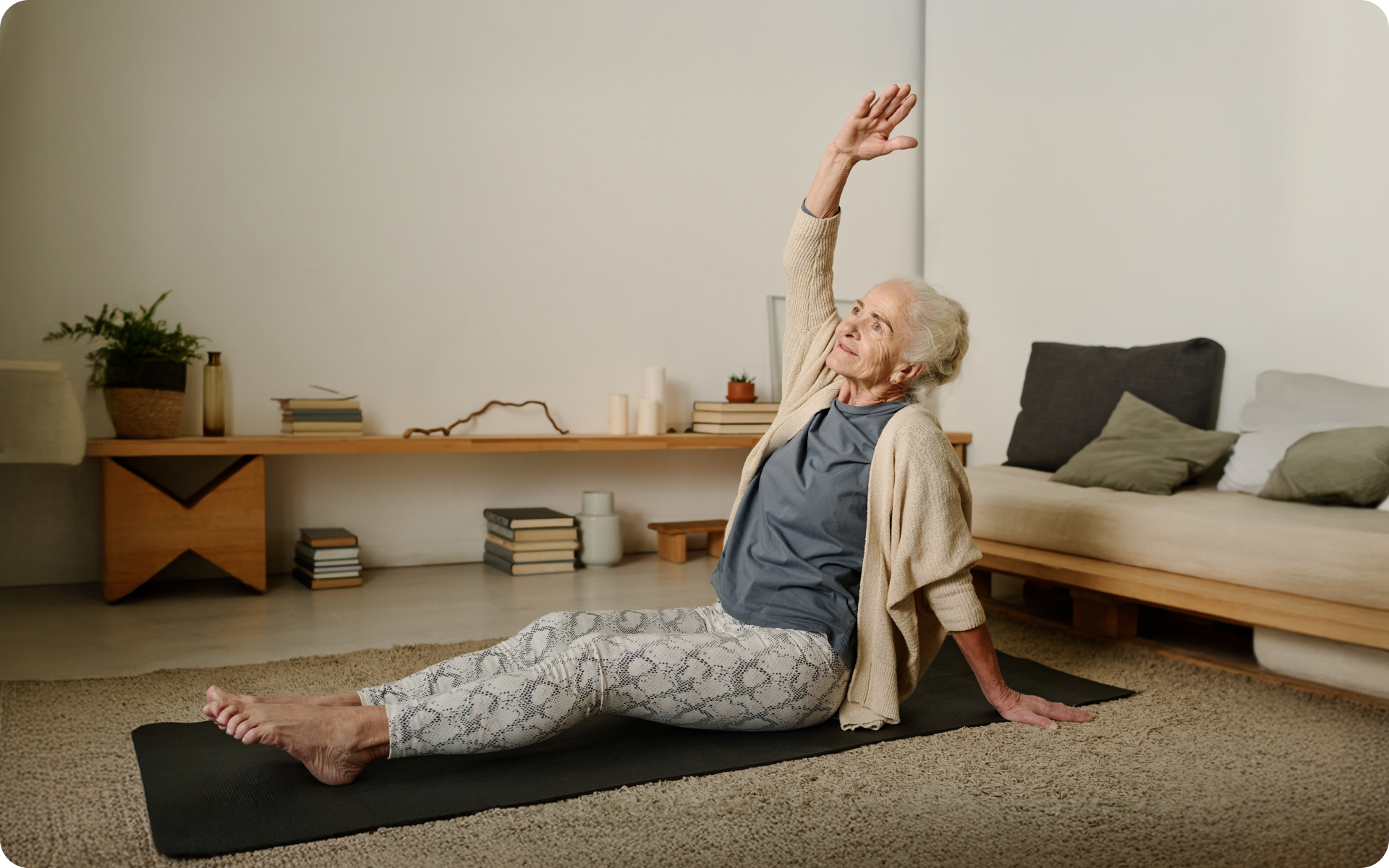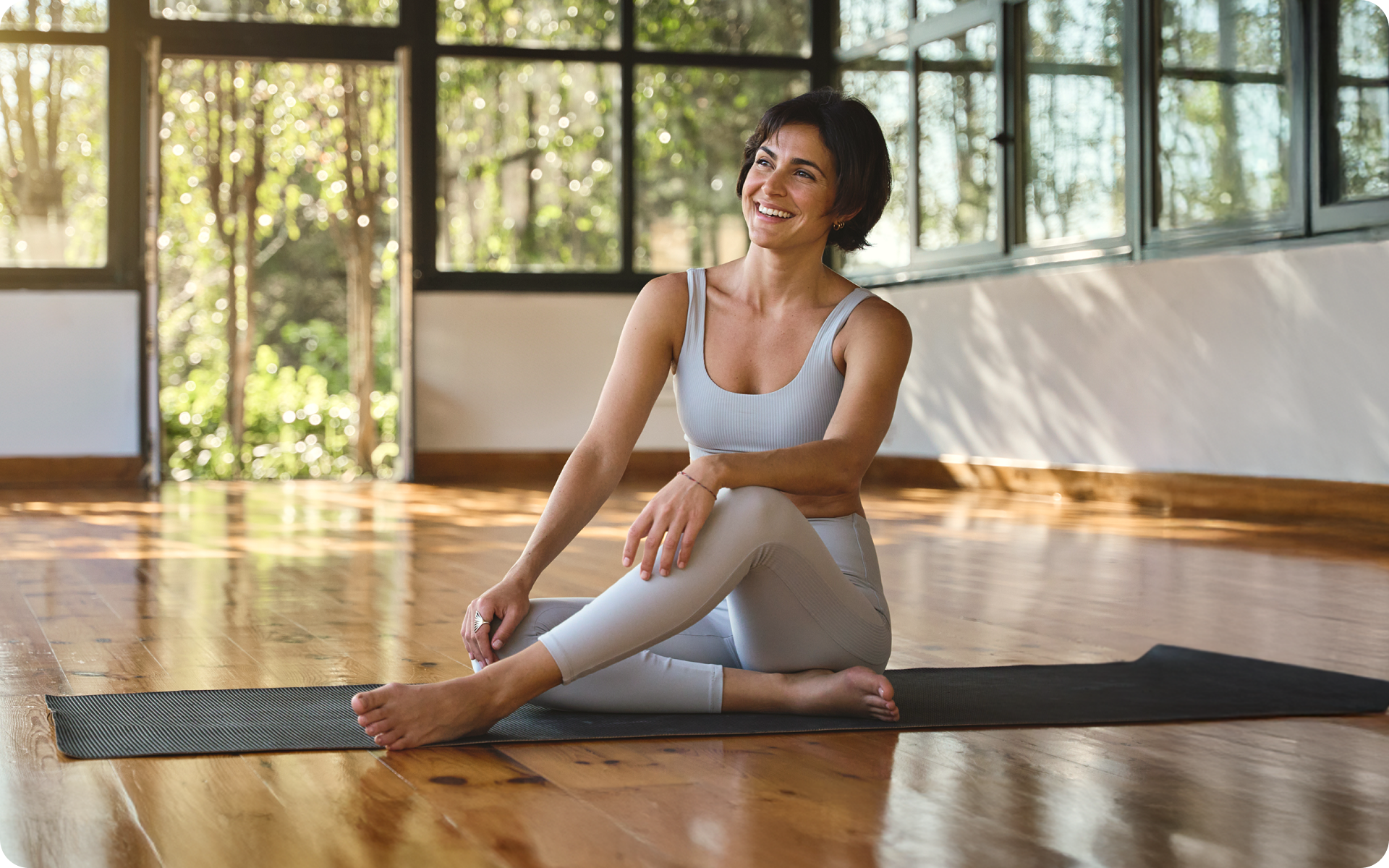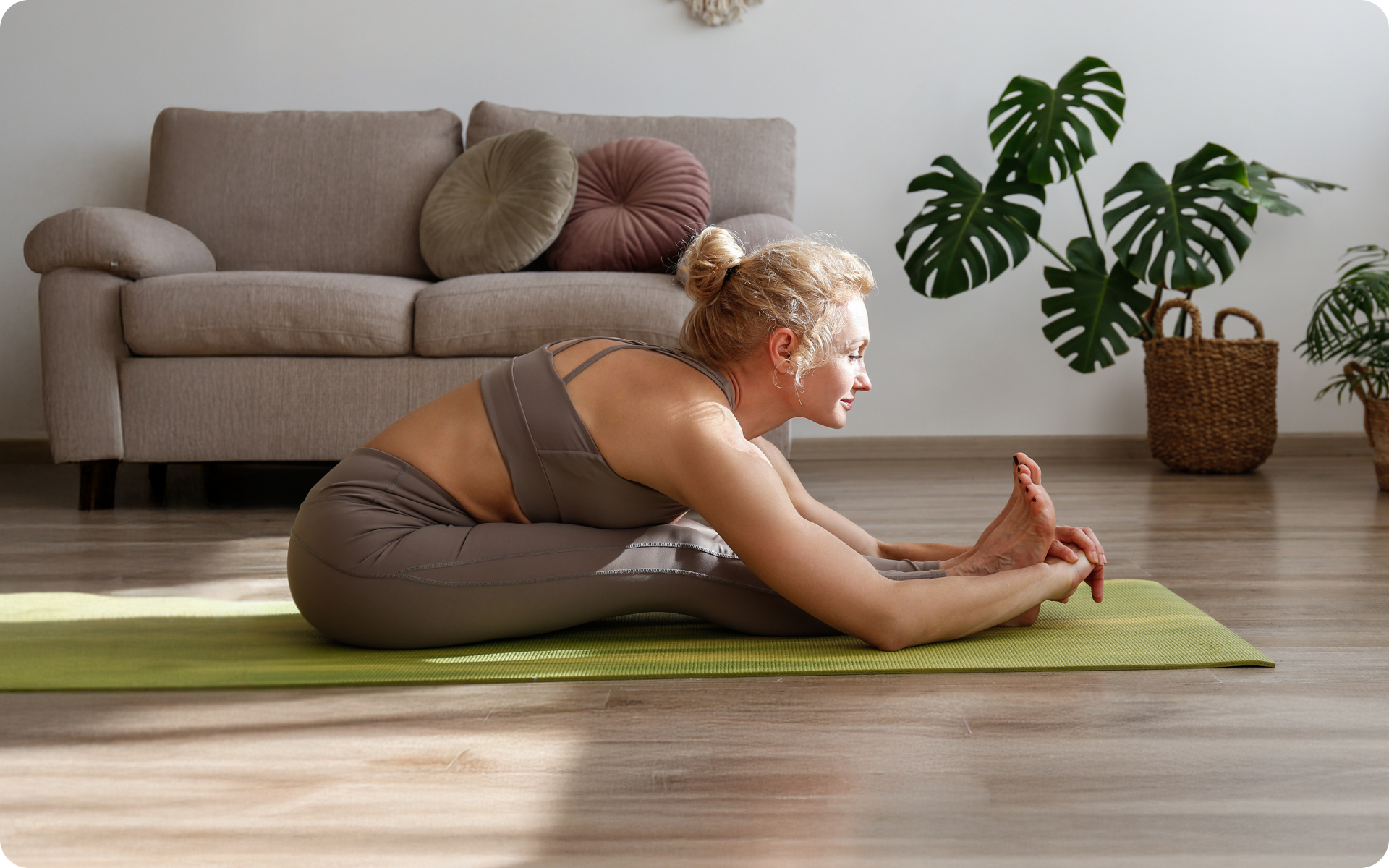Starting a new habit can be difficult—but it’s definitely doable with a little bit of effort and planning. If you’re hoping to start practicing yoga, we’ve got the perfect challenge for you: 15 days of basic yoga poses. This list covers all of the beginner-friendly yoga poses you need to know, plus some tips on how to modify them to make them work for your fitness level. Along with this, you’ll learn about the specific benefits of each pose so that you can start reaping the rewards of your practice right away. So, are you ready to get started? Scroll down to find everything you need to know about this 30-day yoga challenge for beginners. Don’t forget to warm up before getting started, and cool down afterwards with some basic stretches. And most importantly, know that there’s no rush—take your time with each pose, and be gentle with yourself as you learn.
Top 15 Poses For Beginner’s Yoga Challenge
Below are 15 yoga poses that are perfect for beginners. You’ll notice that we’ve included modifications for each pose so that you can make them work for your fitness level.
1. Child’s Pose (Balasana)
What: A seated or resting yoga pose.
How:
- Start in a kneeling position.
- Bring your big toes together, and sit back on your heels.
- Reach your arms forward, parallel to the ground.
- Lower your chest to the floor, and let your forehead rest there.
- Hold for 10-15 breaths.
Why (2):
- Stretch your spine, thighs, hips, and ankles.
- Increase blood circulation to your head.
- Calm your mind to reduce anxiety and fatigue.
- Compress your stomach and activate digestion
- Release tension in your lower back, chest, hamstrings, and shoulders.
2. Cat-Cow Pose (Marjaryasana-Bitilasana)
What: A flowing yoga pose that moves between two positions.
How:
- Start on all fours, with your knees and feet hip-width apart (like a tabletop).
- As you inhale, arch your back downward and tilt your head up to the ceiling.
- As you exhale, round your back and tuck your chin to your chest.
- Alternate between these two positions for 10-15 breaths.
Why (2):
- Gently massage your spine and increase mobility
- Stretch your back and neck muscles
- Relieve stress and fatigue
- Reduce risk of injury during other exercises or activities
3. Cobra Pose (Bhujangasana)
What: A lying down yoga pose that requires upper body strength.
How:
- Lie on your stomach with your legs extended behind you.
- Place your hands on the floor next to your chest, and keep your elbows close to your body.
- As you inhale, push off the ground and straighten your arms. Lift your chest only as high as is comfortable—keep your lower back relaxed.
- As you exhale, release back down to the starting position.
- Repeat 8-10 times.
Why (2):
- Strengthen your back muscles
- Increase flexibility in your spine
- Reduce stress and fatigue
- Relieve lower back pain
- Improve posture by counteracting slumping shoulders
- Improve mood and energy
4. Downward Facing Dog Pose (Adho Mukha Svanasana)
What: An inverted V-shaped yoga pose, often used as a resting position.
How:
- Start on all fours, with your knees and feet hip-width apart (like a tabletop).
- Tuck your toes under, and lift your hips up and back.
- Straighten your legs, and press your heels into the ground.
- Keep your head in line with your arms, and look at your feet.
- Hold for 5-10 breaths, and then release back to all fours.
Why (1):
- Stretch your hamstrings, calves, and Achilles tendon
- Strengthen your arms and legs
- Improve blood flow to the head to help reduce anxiety and fatigue
- Relieve stress and tension headaches
5. Forward Fold Pose (Uttanasana)
What: A forward-bending yoga pose that requires improved functional movement.
How:
- Stand with your feet together.
- As you exhale, fold forward at your hips, keeping your back flat.
- Place your hands on the ground, or use a chair for support.
- Hold for 3-5 breaths, and then release back to standing.
- Repeat 5-10 times.
Why (2):
- Increase flexibility in your hamstrings, hips, and lower back
- Release tension in your neck and shoulders
- Improve poor posture caused by hunching over a desk all day
- Relieve stress and anxiety
- Calm your mind
If you wish to free yourself from all the extra pounds that have been weighting you down for way too long, start using the BetterMe app and overhaul your entire life!
6. Plank Pose (Kumbhakasana)
What: A position that requires core strength and stability.
How:
- Start in a push-up position, with your hands and feet hip-width apart.
- Engage your core muscles, and straighten your body from head to toe.
- Hold for 30-60 seconds.
- Release back to the starting position, and rest for 10 seconds before repeating.
- Repeat 3-5 times.
Why (2):
- Strengthen your core muscles, including your abs, obliques, and lower back
- Improve posture and balance
- Reduce risk of lower back pain
- Energize your body and improve mood
7. Chaturanga Dandasana (Low Plank Pose)
What: A low plank position that requires core and arm strength.
How:
- Start in a push-up position, with your hands and feet hip-width apart.
- Engage your core muscles, and lower your body until your elbows are at a 90-degree angle.
- Keep your body in a straight line from head to toe, don’t let your hips sag.
- Hold for 10-30 seconds, then release back to the starting position.
- Repeat 3-5 times.
Why (3):
- Strengthen your arm and shoulder muscles
- Stabilize your core muscles
- Improve function
- Energize your body and improve mood
8. Low Lunge Pose (Anjaneyasana)
What: A forward-bending yoga pose that opens up the hip flexors.
How:
- Start in a low plank position.
- Step your right foot forward, and place it flat on the ground between your hands.
- Make sure your front knee is bent at a 90-degree angle, your back leg straight.
- Engage your core muscles, and lift your arms up overhead.
- As you exhale, stretch your arms back, and feel a deep stretch in your hip flexors.
- Hold for 5-10 breaths, then release back to low plank. Repeat on the other side.
Why (3):
- Release tension in the hip flexors
- Strengthen the muscles around the hips and pelvis
- Increase flexibility in the hips and legs
- Energize your body and improve mood
Read More: Yoga For Kids: 10 Fun And Easy Poses
9. Triangle Pose (Utthita Trikonasana)
What: A standing yoga pose that improves balance and stability.
How:
- Start in a low lunge position with your right leg forward.
- Engage your core muscles, and lift your arms up overhead.
- As you inhale, rotate your torso to the left, and turn your head to look up at your left hand.
- Exhale, and lengthen your left arm down toward the ground.
- Your left hand should be in line with your left ankle, and your right hand should be pointing up toward the ceiling.
- Hold for 5-10 breaths, and then release back to low lunge. Repeat on the other side.
Why (3):
- Strengthen your legs, hips, and core muscles
- Improve balance and stability
- Increase flexibility in the hips and legs
- Energize your body and improve mood
10. Warrior II Pose (Virabhadrasana II)
What: A standing yoga pose that strengthens the legs and opens up the hips.
How:
- Stand with your feet about four feet apart.
- Turn your right foot out so that it’s pointing toward the front of the mat, and keep your left foot pointing straight ahead.
- Bend your right knee so that it’s in line with your ankle, and sink low into the lunge. Keep your left leg straight.
- Reach your arms out to either side, and keep them in line with your shoulders. Gaze over your right hand.
- To come out of the pose, straighten your right leg and turn your feet forward, coming into a standing position. Repeat on the other side.
Why (3):
- Strengthen your legs, hips, and core muscles
- Improve balance and stability
- Increase flexibility in the hips and legs
- Energize your body and improve mood
11. Side Plank Pose (Vasisthasana)
What: A challenging yoga pose that requires core and arm strength.
How:
- Start in a low plank position.
- Roll onto your right side, and prop yourself up on your right hand and foot.
- Make sure your hand is in line with your shoulder, and your feet are stacked on top of each other.
- Engage your core muscles, and lift your left hand up toward the ceiling.
- Hold for 5-10 breaths, then release back to low plank. Repeat on the other side.
Why (3):
- Strengthen your arms, shoulders, and core muscles
- Improve balance and stability
- Energize your body and improve mood
Yanking yourself back in shape has never been so easy with our game-changing fitness app! Start transforming your life with BetterMe!
12. Camel Pose (Ustrasana)
What: A deep backbend that opens up the chest and shoulders.
How:
- Kneel on the ground with your feet hip-width apart and your knees in line with your hips.
- Place your hands on your hips, and press your hips forward so that your pelvis is in a neutral position.
- As you inhale, lift your chest and engage your core muscles.
- Exhale, press your hips down into the ground as you lift your hands up overhead.
- As you inhale, arch your back and look toward your hands.
- To come out of the pose, exhale and press your hips down into the ground as you lower your hands back to your hips.
Why (3):
- Improve flexibility in the spine and shoulders
- Deepen the breath and open up the chest
- Energize your body and improve mood
13. Bridge Pose (Setu Bandha Sarvangasana)
What: A restorative yoga pose that opens up the chest and shoulders.
How:
- Lie on your back with your feet flat on the ground and your knees bent.
- Place your arms by your sides, and press your feet into the ground as you lift your hips up off the ground.
- Interlace your fingers behind your back, and press your palms into the ground.
- As you inhale, lift your hips up higher, arch your back.
- Exhale, and release back down to the ground.
Why (3):
- Stimulate the thyroid gland
- Improve flexibility in the spine and shoulders
- Deepen the breath and open up the chest
- Energize your body and improve mood
14. Corpse Pose (Savasana)
What: A yoga pose that allows the body to fully relax and release all tension.
How:
- Lie on your back with your feet flat on the ground and your arms by your sides.
- Let your whole body sink into the ground, and close your eyes.
- Breathe deeply, and focus on relaxing your whole body.
- Stay in the pose for 5-10 minutes.
Why (3):
- Release all muscle tension and allow the body to fully relax
- Calm the mind and nervous system
- Promote better sleep
15. Boat Pose (Navasana)
What: A core-strengthening yoga pose that also helps to improve balance.
How:
- Sit on the ground with your knees bent and your feet flat on the ground.
- Place your hands on the ground behind you, and lean back slightly.
- Engage your core muscles, lift your feet off the ground.
- Extend your legs out in front of you, and reach your arms out toward your feet.
- Hold for 5-10 breaths, then release back to the starting position.
Why (3):
- Strengthen the core muscles
- Improve balance and stability
- Energize your body and improve mood
How To Modify Yoga Poses For Beginners
If you’re a beginner, there are a few things you can do to make yoga poses more accessible. Here are a few tips:
- Use props. Blocks, blankets, and straps can help you get into yoga poses more easily and with better alignment.
- Practice with a friend or teacher. Having someone else around can help you feel more comfortable and can offer assistance if you need it.
- Listen to your body. If a yoga pose feels uncomfortable, don’t force it. Modify the pose or try something different.
- Breathe. Taking deep breaths can help you relax into yoga poses and feel more comfortable.
The Bottom Line
Yoga is a great way to improve your fitness, flexibility, and overall well being. If you’re new to yoga, start with some basic poses and then work your way up to more challenging poses.
Remember to listen to your body, and never force yourself into a pose that doesn’t feel comfortable. With regular practice, you’ll soon see the many benefits of yoga.
Get your personalized
meal plan!
DISCLAIMER:
This article is intended for general informational purposes only and does not serve to address individual circumstances. It is not a substitute for professional advice or help and should not be relied on for making any kind of decision-making. Any action taken as a direct or indirect result of the information in this article is entirely at your own risk and is your sole responsibility.
BetterMe, its content staff, and its medical advisors accept no responsibility for inaccuracies, errors, misstatements, inconsistencies, or omissions and specifically disclaim any liability, loss or risk, personal, professional or otherwise, which may be incurred as a consequence, directly or indirectly, of the use and/or application of any content.
You should always seek the advice of your physician or other qualified health provider with any questions you may have regarding a medical condition or your specific situation. Never disregard professional medical advice or delay seeking it because of BetterMe content. If you suspect or think you may have a medical emergency, call your doctor.
SOURCES:
- 9 Benefits of Yoga (n.d., hopkinsmedicine.org)
- Exploring the therapeutic effects of yoga and its ability to increase quality of life (2011, nih.gov)
- Yoga: What You Need To Know (2021, nih.gov)
